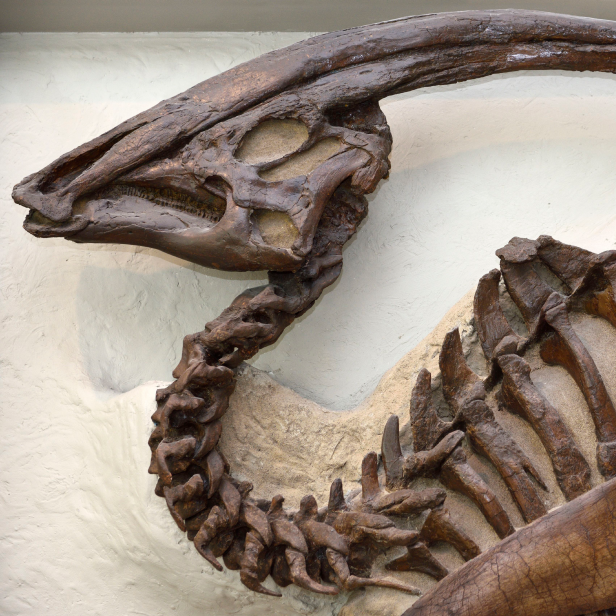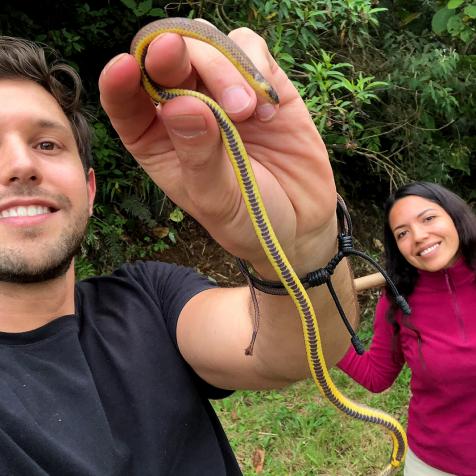
(c)2016 Reimar Gaertner
Found: Perfectly Preserved Dinosaur Skull
Bucky gets lucky with a new fossil discovery. A North Carolina State University paleontologist finds his dream fossil in the sands of the New Mexico desert.
It’s remarkable that to this day humans are connecting with the history of Earth, finding trailblazing discoveries around the world of the creatures that came before us. We are still learning, finding, and hoping that the best is yet to come.
The Parasaurolophus cyrtocristatus, known to humans as the ‘duckbilled’ dinosaur that can grow up to 30-feet long, has made a comeback with recent discoveries. Bucky Gates, a North Carolina State University paleontologist, has been studying the rare species of Parasaurolophus for most of his life, relying solely on an imperfect, fragmented skull discovered in 1921. A sudden halt arose when Bucky was unable to retrieve any further data to aid his research from the current specimen. “I was stymied because I was unable to get any more data from the original specimen collected in 1921 and honestly I never thought I would be able to do it because we had to have a perfect specimen,” said Gates.
20 years into his career, Gates and his team remained hopeful there was a chance that a better sample had yet to be discovered. And just when they thought it could be too good to be true, the New Mexico desert was revealing a bit more under its sand than paleontologists realized. Not only was the fossil identified from the Parasaurolophus species, but it was exactly what Gates and his team needed- a perfectly preserved intact skull. The fossil was found in “pristine condition, including the duckbill,” according to CBS 17.
The duckbill dinosaur is known for its giant crest, but it hadn't been well-preserved in a recovered specimen — until now. @NCStateSciences' @terryagates was part of a team that recovered a Parasaurolophus skull from the badlands of New Mexico. https://t.co/RAQbKMPLf6 #ThinkAndDo pic.twitter.com/cFtgZCkG1X
— NC State University (@NCState) February 19, 2021
Way back when, around 75 million years ago, the New Mexico desert was home to many Parasaurolophus. It was there they thrived in a swampy environment with ample vegetation. Connecting the historic time, location, and intact skull, Gates believes, “[w]e can start to understand a little bit better how this really unique structure changes over time and what was required for these duckbilled dinosaurs to have this feature.” By doing so, paleontologists hope this will provide a ‘better understanding’ for its purpose.
Gates is now on the hunt to answer what this new fossil can provide him and others of this rare species. “I could just start looking into the eyes of this thing and imagining it. I was putting layers of flesh on it, putting skin on it, imagining air-breathing in and out of the tubes because I’ve spent so long of my life imagining how these dinosaurs lived,” he said.


















